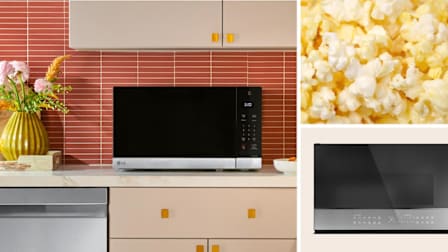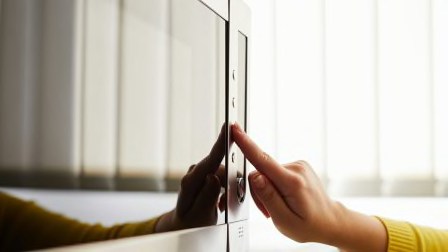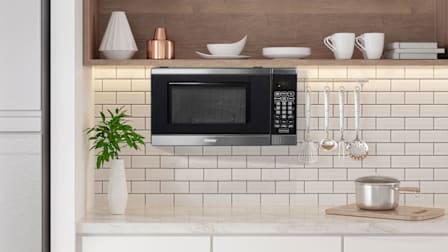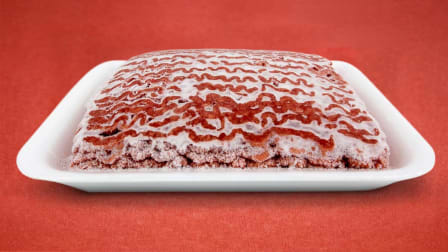Check Your Technique: You're Probably Microwaving Your Food Wrong
Can arranging your food in a ring or doughnut shape help heat it more evenly?

I use the microwave almost every other day, mainly to reheat leftovers. You’d think that with such frequent usage, I’d be able to ensure that my food comes out of the microwave perfectly heated every time, but sadly, that isn’t the case.
Every time I use the microwave, I risk feeling like Goldilocks. Sometimes the food’s too hot. Sometimes it’s too cold. And sometimes, it’s the worst case scenario: parts of the food are ice cold while other parts feel like they’re burning my taste buds off.
Having cold and hot spots in your food is one of the most annoying things to experience when you use the microwave. And yet it’s so common that there are several videos on TikTok that propose ways to fix this issue, including using the “doughnut method.”
@americaninventor True secrets are never on the surface, so watch and see. #HowThingsWork #Learning #Understanding #Knowledge #EducateYourself #KnowledgeIsPower #LifeLessons #Growth #CriticalThinking #Analyze #DeeperMeaning ♬ Rina Sekarang X One More Night - TRENDZ CC
The Ways We’ve Been Microwaving Our Food Wrong
1. Using high power for too long: “Many people don’t realize that they can adjust the power levels of their microwaves, so they simply default to always using ‘high’ power levels,” says Daryl Williams, executive director of global specialty products for GE Appliances.
A high power level might be fine when you’re heating up liquids like coffee or soups, but when it comes to cooking, reheating, and defrosting or melting food, lower power levels will often yield amazing results, Williams says.
Many foods don’t require the full power of the microwave, so if you’re gunning it at high power every time, you risk drying out your food, says Louis Nieves, senior product engineer at Panasonic Consumer Electronics.
2. Not covering our food when we heat it: Having your dish covered provides safe, even heating and helps keep in the moisture, according to the Department of Agriculture.
“The microwave works by rapidly vibrating water molecules, causing quick evaporation,” says Steph Chen, CEO and founder of microwave cookware brand Anyday. “Without a lid to trap that moisture, your food turns dry and rubbery. A lid is more than just a cover—it’s the key to a tastier, juicier meal.”
What Are the Right Microwaving Techniques?
Let’s start with the doughnut method. Will it actually work at heating your food more evenly? Experts seem to be divided on this. Some say yes, in theory, it could, because microwaves mostly heat up the food closest to the outside of the dish the fastest. Microwaving food arranged in a “doughnut” shape can allow the microwave energy to reach all parts of the food more evenly, Chen says. “Depending on the food, microwaves can only penetrate about 1 inch deep, so if you have food stacked up more than 1 inch high, it has a hard time cooking the middle at the same rate as the edges.”
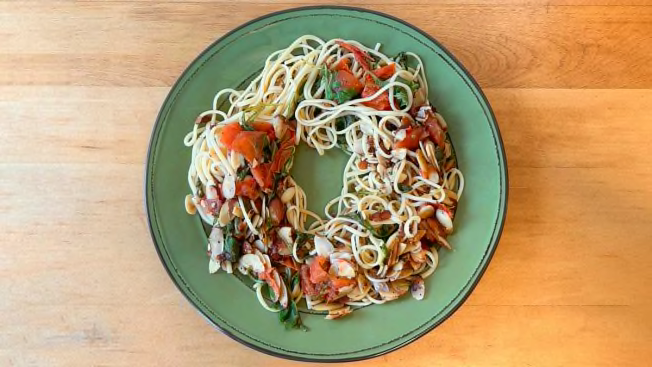
Photo: Pang-Chieh Ho/Consumer Reports Photo: Pang-Chieh Ho/Consumer Reports
The method, however, isn’t a surefire guarantee. The problem is that each microwave distributes heat differently, says Ginny Lui, who oversees CR’s testing of microwaves. Because of that, the cold or hot spots in your food can be anywhere. It could be on the edges or in the center.
In practice, when I tried heating up food in a doughnut shape a few times, the results were not definitive. Sometimes the doughnut-shaped food would have a higher temperature, while other times the food that I had left in a regular shape was hotter.
So if you want your food to heat up evenly and efficiently, here are more tried and true methods recommended by experts that you can prioritize.
First, try reducing the power of your microwave and increasing your microwave time. By doing this, you’ll be able to avoid food that’s unevenly heated. Grains like rice and proteins like fish or chicken will especially benefit from a lower power setting, Chen says.
Correctly utilizing your microwave’s power levels can help prevent you from under- or overcooking your food. “Some microwave-specific recipes will specify which cooking power to use by either a percentage or name, so it’s important to understand what each power level does when you’re cooking,” says Bree Lemmen, kitchen brand manager at Whirlpool.
As mentioned before, a cover is your best friend when it comes to microwaving food. You can loosen a lid so that some steam can escape. Before you microwave something, you always want to examine the microwave-safe claims of your lids, and containers, says Ashita Kapoor, the associate director for Consumer Reports’ product safety team. Wax paper, cooking bags, parchment paper, and white microwave-safe paper towels should be safe to use, according to the Department of Agriculture. For containers, only use cookware made from glass and ceramic that are labeled for microwave usage.
To reduce the likelihood of your food having cold and hot pockets, limit the number of things on your plate. Give your food some room and try not to overcrowd it, Nieves says. You can also try microwaving things of a similar density together because they’ll heat up at a similar rate, instead of microwaving a whole meal at once.
Foods with higher density, such as meats, typically take longer to heat through than less dense foods like breads. “It’s best to keep the thickest pieces of food outward, closest to the microwave walls,” Lemmen says.
Stirring the dish in the middle of your microwaving is also one of the best ways to ensure that the center is cooked or reheated evenly. For cooking larger items like chicken breasts or fish, flip it halfway through the process, Chen says. And if your microwave doesn’t have a turntable that rotates, you can rotate your bowl or plate midcycle to provide more uniformity during heating, Williams says.
A final tip about microwaving your food? A little patience might go a long way. “Many foods benefit from a 2- to 3-minute resting period after cooking in the microwave so that the residual steam and heat can gently finish cooking the food,” Chen says.





























